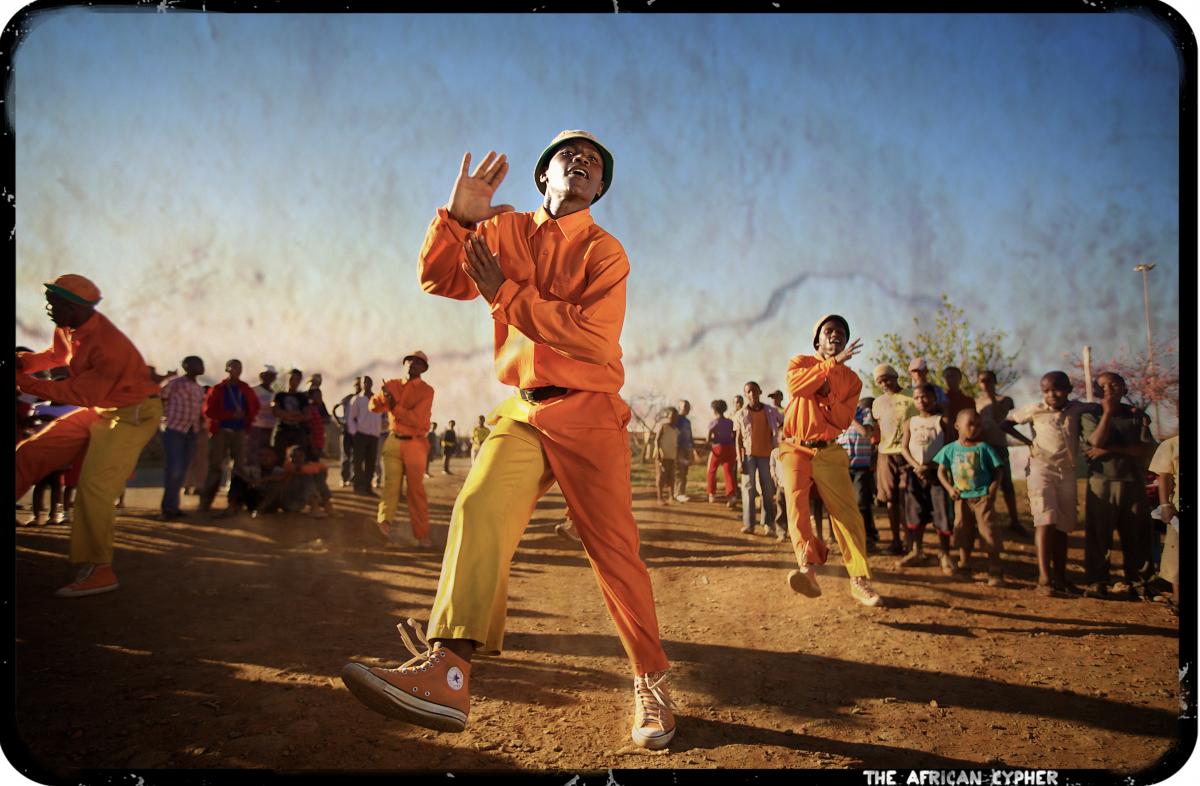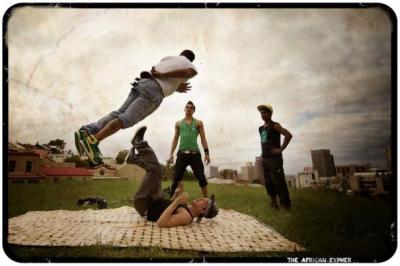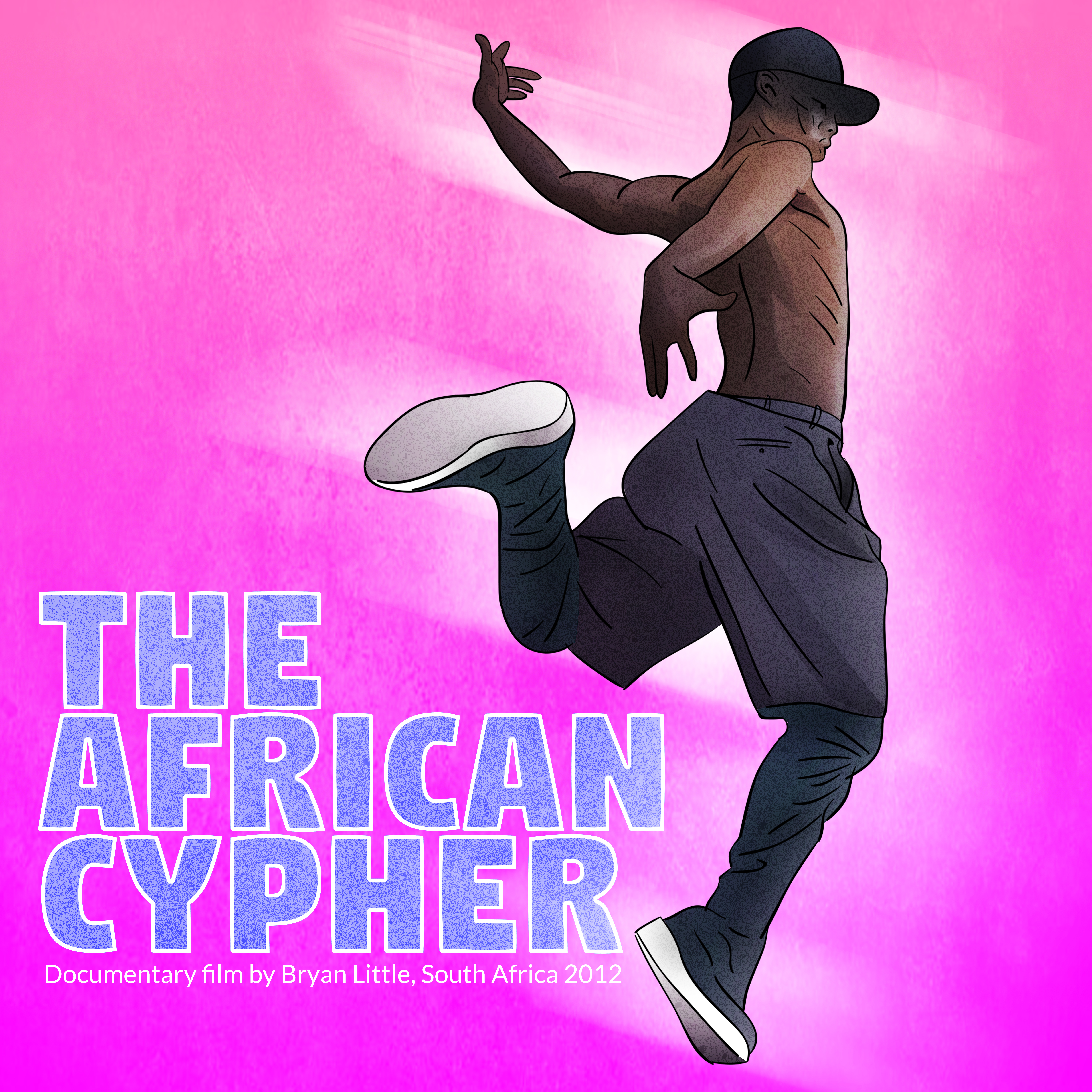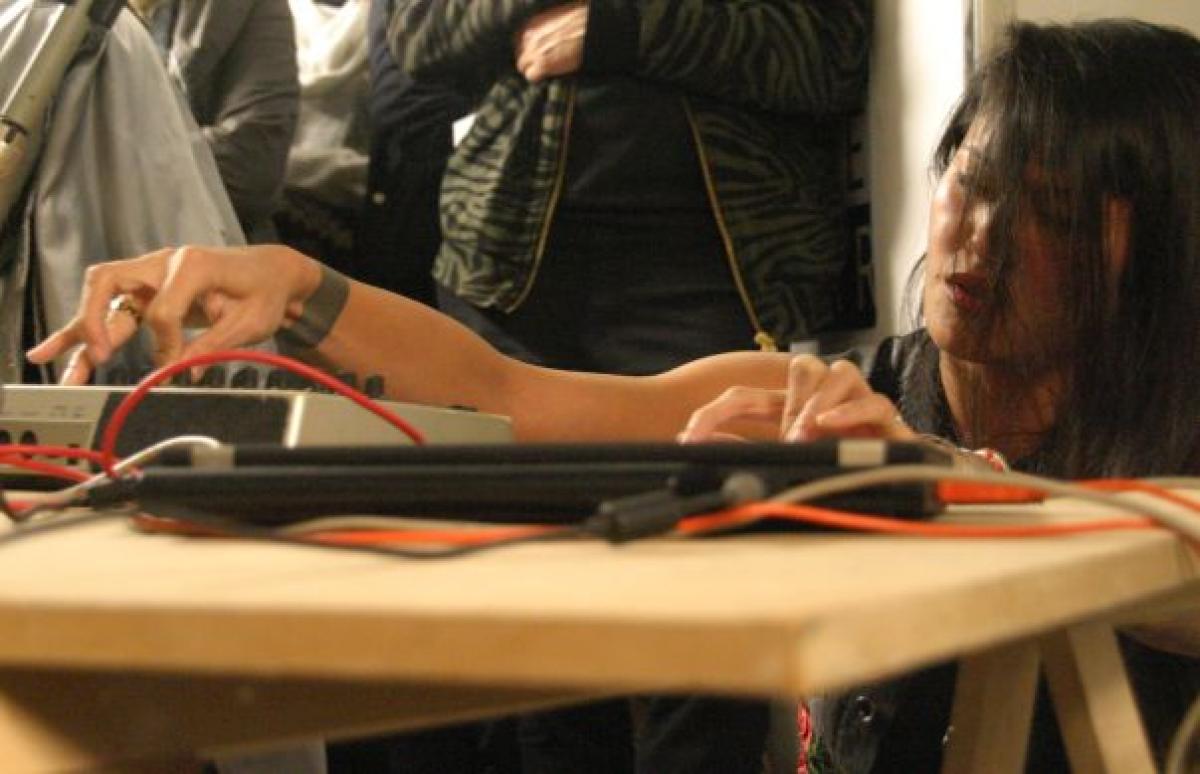
Dancing with Cars
Bryan Littles’ documentary The African Cypher portrays a huge variety of dance subcultures in South Africa. Mostly they perform on streets, though some dancers indulge in dangerous rituals: they dance with cars passing by. Here, Eric Mandel examines if this is a symbol of man and machine.
Glossy race cars are drawing rubber circles on an empty parking lot somewhere in Cape Town, South Africa. In between the smoke of the tires, B-Boys spin in a fluid countermovement to the cars. They seem unimpressed as the cars come dangerously close to their bodies. This powerful image of man and machine is the beginning of Bryan Littles’ documentary The African Cypher. It reoccurs every time the protagonists go eye to eye with a car. When the dance crews come out to rehearse in public and their gathering fan crowds form roadblocks, dancers engage with passing vehicles in comical moves of confrontation and empowerment. Their dances range from the US-imported Breakdance and Krumping to local dance creations such as Pantsula, Sbhujwa and the confusingly aggressive Kathan.
Man Versus Machine
The image of man and machine also symbolizes the struggle of the portrayed dancers. As the film shows, most of them are thrown into a merciless economy and dancing offers them a temporary relief. The cars are a metaphor of the urban reality in the post-Apartheid society: an industrially produced, potentially dangerous agent of capitalism, but also a sign of success and social mobility. In fact, the drivers in the race car sequence turn out to be B-Boy veterans themselves who talk in length about prejudice and injustice they suffered as people of colour, and as dancers.

In this movie, a car is depicted not as an obstacle or a trophy, but rather as a means to the dancers’ end; for example, Pantsula dancer Mada, partner of the movie’s tragic hero Prince, uses a battered vehicle to bring home some chickens in order to slaughter them and prepare them for consumption. The small time business enables him to stay true to his passion. In fact, he and Prince will make it to the film’s showdown, a dance battle hosted by a notoriously mighty drink company. But what could have been a grand finale for this beautifully filmed excursion into South African street culture is overshadowed by the tragic epilogue. The last car we see in the film serves as a hearse.
Biography
Published on December 29, 2018
Last updated on April 10, 2024
Topics
From classism in techno clubs to clashing ideals of masculinity in Brazilian «bate bola».
From Muslim taqwacore to how the rave scene in Athens counters the financial crisis.
From breakdance in Baghdad, the rebel dance pantsula in South Africa to the role of intoxications in club music: Dance can be a form a self-expression or self-loosing.
Why do people in Karachi yell rather than talk and how does the sound of Dakar or Luanda affect music production?
Snap


